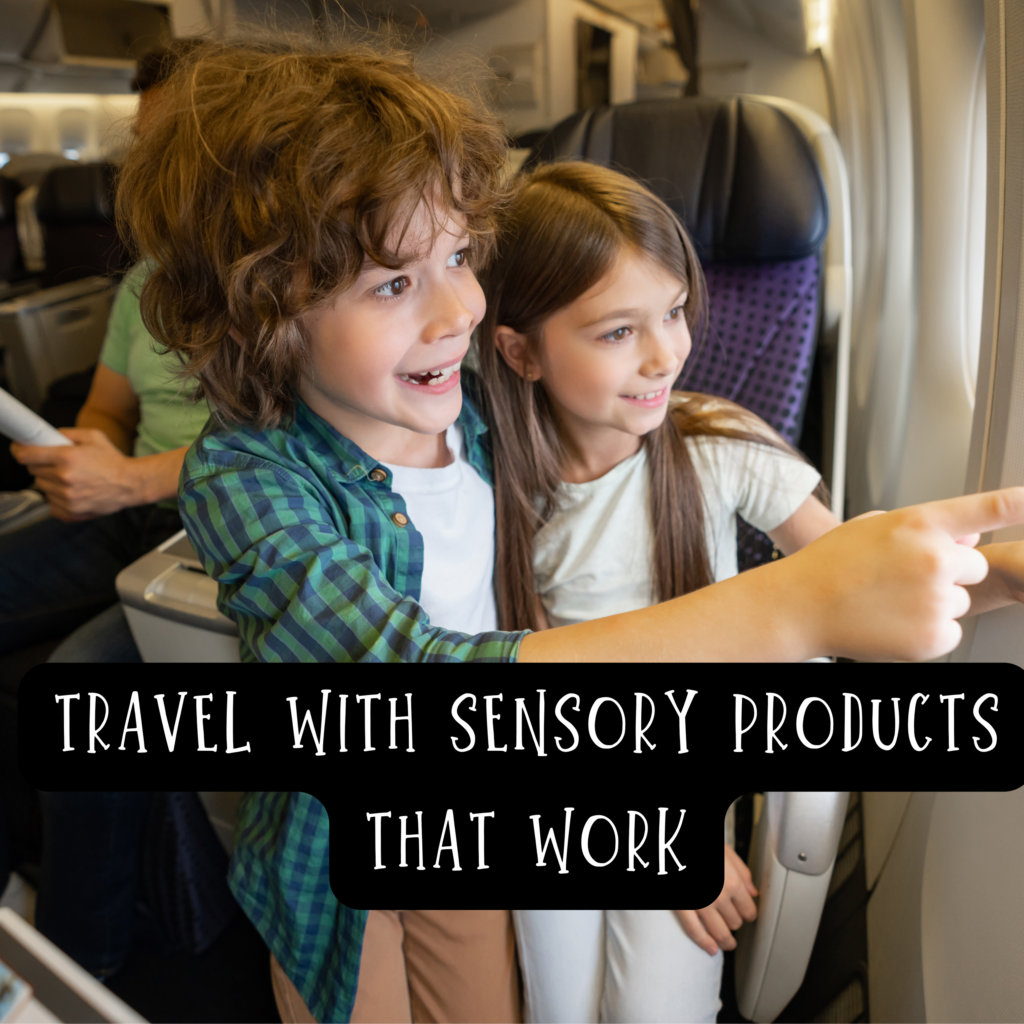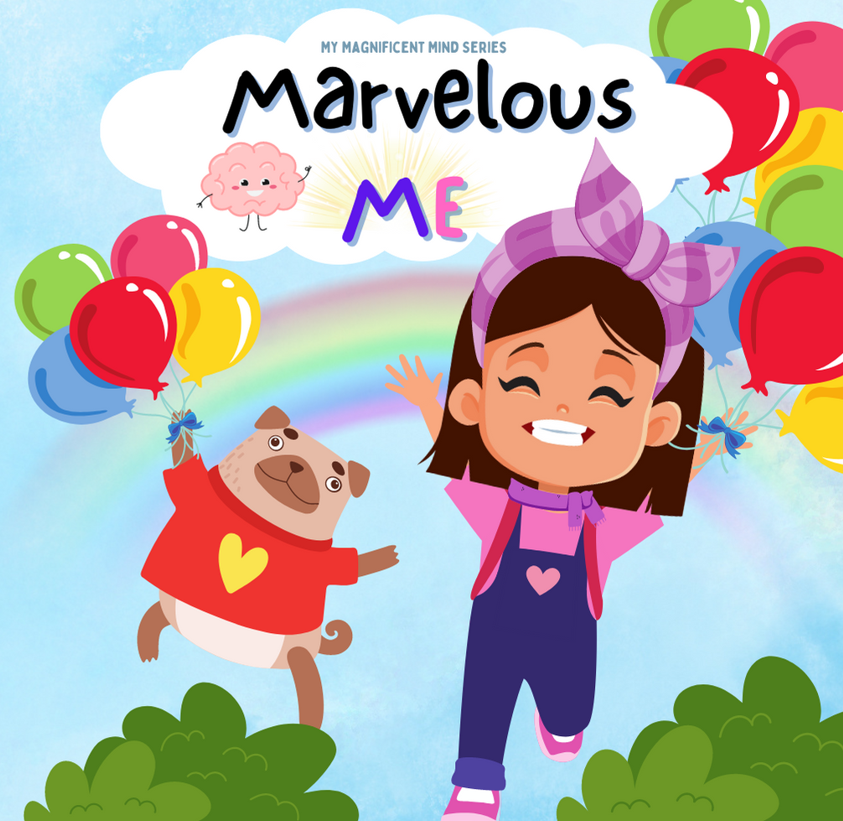Understanding the Connection Between ADHD, Autism and Auditory Processing Disorder
ADHD, Autism and Auditory Processing Disorder (APD) are three conditions that often go hand-in-hand, but it’s important to understand the differences between them. Autism Spectrum Disorder (ASD), is a developmental disorder that affects how a person thinks, communicates, and interacts with others. ADHD is a neurodevelopmental disorder characterized by difficulty paying attention, impulsivity, and hyperactivity. APD is an auditory disorder in which the brain has trouble processing the sounds it hears. Although the three conditions are different, they all cause significant challenges for individuals who experience them. This can cause frustrating days and grumpy moods in our kiddos. So how do we know if our kiddo has Auditory Processing Disorder? If my child does, then what? In this blog post, we’ll explore the connection between ADHD, Autism and APD and discuss the treatments available to help those affected by them.
What is Auditory Processing Disorder (APD)?
Auditory Processing Disorder, or APD, is a condition that affects how the brain processes sounds. Individuals with APD struggle to understand and interpret sounds in their environment, even though they may have normal hearing abilities.
This condition is particularly common in children, and parents may notice that their child is struggling to follow directions, understand speech in a noisy environment, or has difficulty remembering information presented verbally. APD can also affect individuals of all ages, and may be misdiagnosed as other conditions.

While APD can be a frustrating and challenging condition to manage, there are a variety of ways to help individuals with this disorder. By understanding the connection between APD, Autism and ADHD, parents and caregivers can provide targeted support and interventions to improve their child’s quality of life. In the next sections, we’ll explore this connection in more detail, and discuss some effective treatments and coping strategies for individuals with APD, Autism and ADHD.
ADHD & APD : The common connection
It is common for children with ADHD to also have Auditory Processing Disorder (APD). In fact, research suggests that up to 75% of children with ADHD also have APD.
Both ADHD and APD are neurological conditions that affect the way the brain processes information. Individuals with ADHD struggle with the following: impulse control, attention span, hyperactivity while those with APD struggle to understand and interpret sounds and speech.
Children with APD may have difficulty distinguishing between different sounds or understanding speech in a noisy environment. This can lead to difficulties with communication, learning, and socialization. In individuals with ADHD, the symptoms of APD can be particularly challenging, as they may struggle with both attention and processing auditory information.
It’s important to note that having ADHD does not necessarily mean a child has APD, and vice versa. However, if you suspect your child may have both conditions, it’s important to get them evaluated by a professional. We’ll go over this more in a bit.
EARLY DIAGNOSIS and treatment for both ADHD and APD can greatly improve outcomes for children. Working with a specialist can help develop a treatment plan tailored to your child’s specific needs and challenges. Overall, the connection between ADHD and APD highlights the importance of considering all aspects of a child’s neurological functioning when assessing and treating learning and behavioral challenges. Start early, Mamas, and you won’t regret it!
Symptoms of APD in Autism: Why it’s easily overlooked
Research has shown a significant connection between Autism Spectrum Disorder (ASD) and Auditory Processing Disorder (APD). In fact, studies suggest that up to 60% of individuals with ASD also have APD. Both conditions involve difficulties with processing information, particularly auditory information.
For individuals with both ASD and APD, the challenges can be compounded. They may struggle with social communication and interactions, as well as difficulties understanding and interpreting speech and sounds. These individuals may have a heightened sensitivity to certain sounds or be easily overwhelmed by auditory stimuli.
Additionally, the symptoms of APD can overlap with those of ASD, making it difficult to distinguish between the two. For example, both conditions may involve difficulties with social communication, sensory processing, and executive functioning.
It’s important for parents, caregivers, and professionals to be aware of the connection between ASD and APD. By recognizing and addressing both conditions, individuals can receive more comprehensive support and interventions tailored to their specific needs.
Early diagnosis and intervention are crucial for individuals with ASD and APD. Speech and language therapy, occupational therapy, and sensory integration therapy are among the interventions that can help improve communication, sensory processing, and overall quality of life.
Symptoms of APD in individuals with ADHD & Autism

As a parent, you have to put your detective hat on and look for CLUES as to what may be causing your child’s frustration. If you have seen your child confused, question what was said or get angry because they misheard something, then these are signs of APD.
If your child is confused when you speak, then a good thing to ask is “Tell me what you heard”. For example, if you ask your child a question like, “Can you open the door please?” they might hear “Can I have some more cheese?” You can imagine how frustrating it can be for the kiddo to constantly mishear things that were said.
Some common signs of APD in ADHD & Autism
- difficulty following directions
- poor listening skills
- and trouble understanding speech in noisy environments
Having either ADHD, Autism or APD is hard enough to live with, but having ADHD & APD or Autism & APD makes life very confusing and hard to keep up with. In a school setting, students with APD and ADHD may struggle with classroom lectures and group discussions, as they may have difficulty processing spoken information. They may also have difficulty following directions from teachers, as they may misinterpret or forget what was said. Students with Autism may
In social settings, individuals with APD and ADHD may struggle to understand and participate in conversations, particularly in noisy or crowded environments. They may also have difficulty with social cues and understanding nonverbal communication, which can impact their relationships and social interactions.
It’s important to note that these symptoms can vary in severity from person to person and may also depend on the environment. Having both ADHD and APD can make your child’s days confusing and challenging but if you have a plan of action and coping mechanisms, you can teach your child how to take control and navigate through those tough days.

Individuals with Autism may exhibit signs of Auditory Processing Disorder (APD) due to their difficulty processing and understanding sounds. Common signs of APD in individuals with autism include sensitivity to certain sounds, difficulty filtering out background noise, and challenges with speech and language development. They may also have difficulty understanding and responding appropriately to verbal instructions or social cues. It’s important for parents and caregivers to be aware of these signs and seek professional evaluation and support to address both the autism and APD symptoms.
The impact of APD on learning and why it’s important that you clue your kiddo in
Individuals with Auditory Processing Disorder (APD) often struggle with listening and understanding spoken language. Learning this broke my heart. To think that my kiddo was has been hearing different things which probably caused the trouble in group situations, verbal instruction and a ton of other challenging situations tore me apart. My kiddo had a lot more going on than just ADHD in school. This can have a significant impact on their ability to learn, especially in school settings. I was determined to figure out how to attack this.
In a classroom, students with APD may have difficulty following lectures, participating in discussions, and completing assignments that require them to understand verbal instructions. They may also struggle with taking notes and remembering information presented orally.

Furthermore, individuals with APD may experience difficulties with reading, as phonemic awareness is crucial in the process of decoding and comprehending written language. This can result in reading comprehension difficulties, making it hard for students to understand what they are reading.
It is essential for teachers and parents to recognize the impact of APD on learning and provide appropriate accommodations and support to ensure that students with APD have equal access to education. This can include providing preferential seating, using visual aids, and breaking down complex information into smaller, more manageable chunks.

Moreover, it is important for individuals with APD to be aware of their condition and to develop their coping strategies. These may include active listening and engaging with the speaker, repeating the speaker’s words internally, and taking notes. This is a practice that’s extremely helpful. It is helpful for the child to not only silently repeat what was said in their head but to also take notes. If the child’s notes don’t make sense this would be a good time to bring it to the teacher to clarify and state what was actually said so that the child can understand and move forward with the lesson.
Some families, like ours, decided to go into a smaller group setting. Instead of homeschool, we went into Microschool for our child because we know our kiddo the best and our life allowed for this accomodation. For families who do not want to or cannot do Microschool, then speaking with the teacher to implement these accomodations would be extremely helpful and benefit your child tremendously. Read our other blog on what Microschool is and how it might be a game changer for your kiddo!
Diagnosis of Auditory Processing Disorder
If you suspect that you or your child may have APD in addition to ADHD or Autism, it’s important to seek an evaluation from a professional who specializes in APD like an audiologist. A diagnosis typically involves a series of tests and assessments, including hearing tests, speech tests, and language comprehension tests.
One commonly used ASSESSEMENT TOOL is the Dichotic Listening Test, which measures the ability to process sounds presented to both ears at the same time. The Test of Auditory Processing Skills (TAPS) is another commonly used tool that measures various auditory processing skills.
It’s important to note that a diagnosis of APD doesn’t necessarily mean that ADHD or Autism is the underlying cause. In some cases, other factors, such as anxiety or a history of ear infections, may be contributing to the symptoms of APD.
If a diagnosis of APD is confirmed, treatment options can be explored to help manage the symptoms and improve overall quality of life. See our other blog about what games and products we use to minimize symptoms of APD. Our brain can literally rewire parts of itself and brain training along with certain devices can significantly improve symptoms.
Treatments for Auditory Processing Disorder (APD)
While there is no cure for Auditory Processing Disorder (APD), there are treatments that can help individuals with APD better manage their symptoms. Here are some treatments that parents of children with APD can consider:
Steps for Parents

- Consult with a specialist: If you suspect your child has APD, it is important to seek the help of a specialist who can properly diagnose and treat the disorder.
- Speech and language therapy: Speech and language therapy can help improve language and communication skills in children with APD. This type of therapy focuses on improving language and communication skills.
- Classroom accommodations: Talk to your child’s teacher about making classroom accommodations such as reducing background noise and using visual aids.
- Home-based activities: Work with your child at home by reading stories, playing listening games, and using activities that stimulate auditory processing.
The cost of treatments for APD can vary widely depending on the type of treatment and location. Speech and language therapy can be covered by insurance while other treatments may not be covered.
- Auditory training: This type of therapy uses specialized equipment and software to improve the ability to process and understand auditory information.
- Environmental modifications: Changes in the home or classroom environment, such as reducing background noise and using visual aids, can help individuals with APD better understand speech.
It is important to note that treatments for APD can take time and consistency in order to see results. It is crucial to work closely with a specialist and consistently practice at home in order to make progress.
Coping strategies for kiddos with APD
Living with APD can be challenging for individuals with ADHD or Autism and can lead to difficulty understanding and processing sounds, which can exacerbate the symptoms of ADHD and Autism. However, there are coping strategies that individuals with both who can use to manage their condition. As parents we can structure our home to accomodate our kiddo. These strategies will not only help your child but will strengthen your relationship with them due to better communication AND this will boost their confidence because now they are truly being heard. Here are some things we can do in our home to help our child improve understanding and communication skills.
- Reduce background noise: Background noise can make it difficult for individuals with APD to focus on important sounds. Therefore, it is essential to minimize noise distractions by finding quiet areas to work or study. Additionally, headphones can be worn to block out background noise.
- Use visual aids: People with APD can benefit from using visual aids, such as charts, diagrams, and pictures, to supplement auditory information. This technique can help to improve understanding and retention of information.
- Break down instructions: Breaking down instructions into small, manageable steps can make them easier to follow. This strategy can reduce frustration and improve understanding.
- Seek assistance from teachers or colleagues: It is crucial to seek help from teachers or colleagues when struggling to understand information. This approach can lead to the clarification of misunderstandings, which can help improve performance.
- Practice active listening: Active listening involves focusing on what someone is saying, asking questions, and providing feedback. This strategy can help individuals with APD improve their comprehension and communication skills.
- Work on improving attention: Individuals with ADHD often struggle with paying attention. Working on improving attention can help to reduce the impact of APD symptoms. This can be achieved through meditation, exercise, and mindfulness practice.
- Create a structured and predictable environment to reduce anxiety and improve understanding.
- Use schedules, visual timers, and visual cues to enhance communication and comprehension.
- Provide opportunities for sensory breaks and activities to help regulate sensory input and promote attention.
Your child will thank you!

Your child is just discovering the world and that means discovering who they are as well. They may not know if they are hearing things that are not what was said, they might just be confused. They may not figure out why their peers are doing something different during a school lesson after instructions were given, or not understand why their friends laughed because they answered their question with an answer that didn’t make sense. Many parents, like us, did not understand why our child was so confused. It wasn’t until our discovery of the ADHD and Auditory Processing Disorder connection that we realized that our child might have APD as well. This is important because not many people are aware of the common connection between ADHD & APD or Autism & APD. Hopefully, this helps parents out there to realize that there might be something else going on with their kiddo and can start working on it early.
We are firm believers in that all children have their own learning style and can achieve amazing things. As parents, we just have to help them understand their minds and give them the tools to do great things in this world!

Your child is amazing but they just don’t know it yet! Click below to see how you can show your child how awesome they are!

Do you want to teach your child how to love their awesome minds? Listen to positive affirmations for kids. Read More..

Upcoming vacation? What you will need for sanity on your next road trip. Read More…

If you want your kiddo to know how awesome they are, then have them read this book! Written by an ADHD family. Read More…


No responses yet